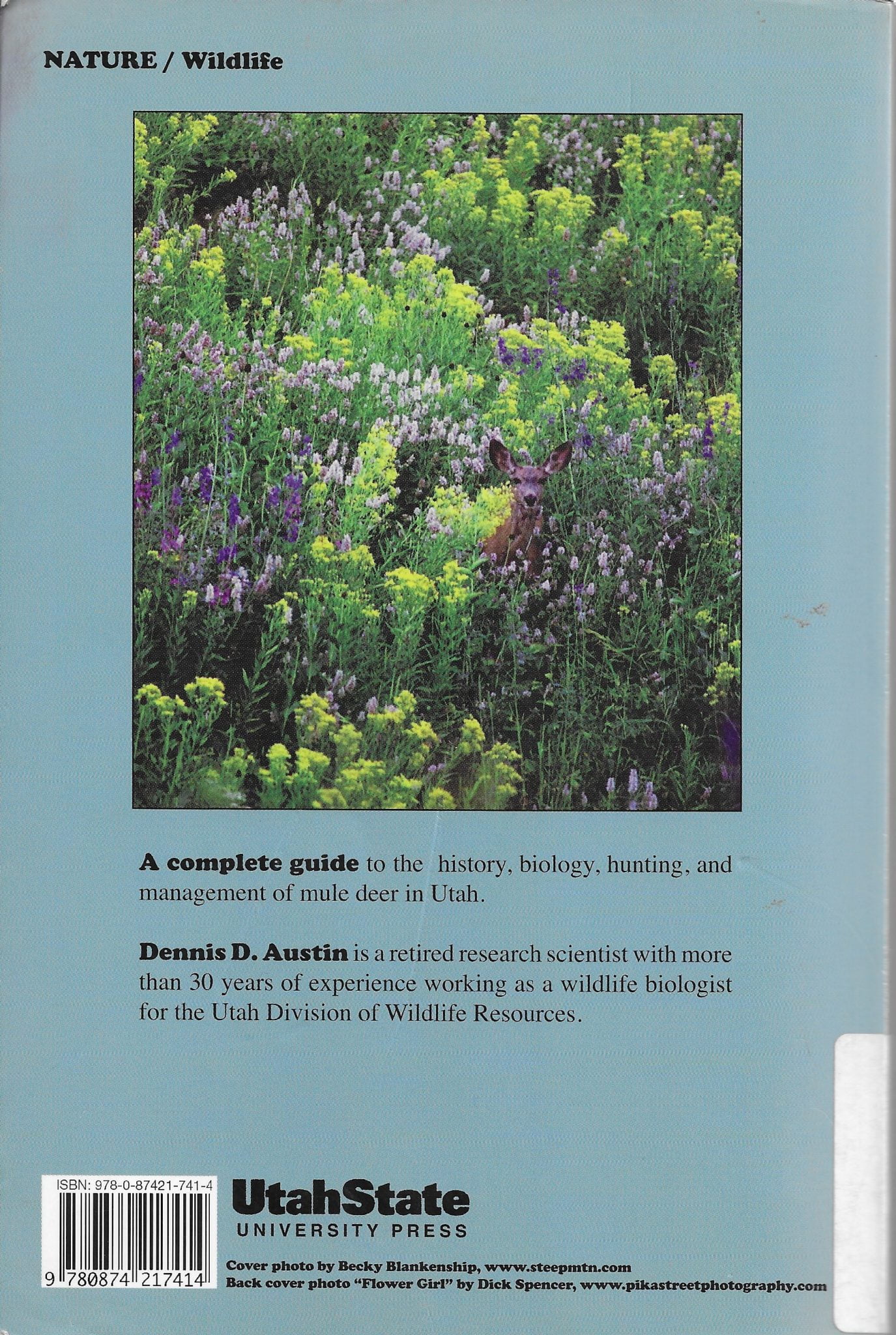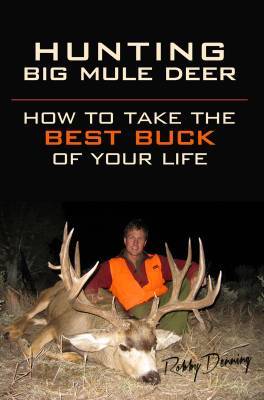. 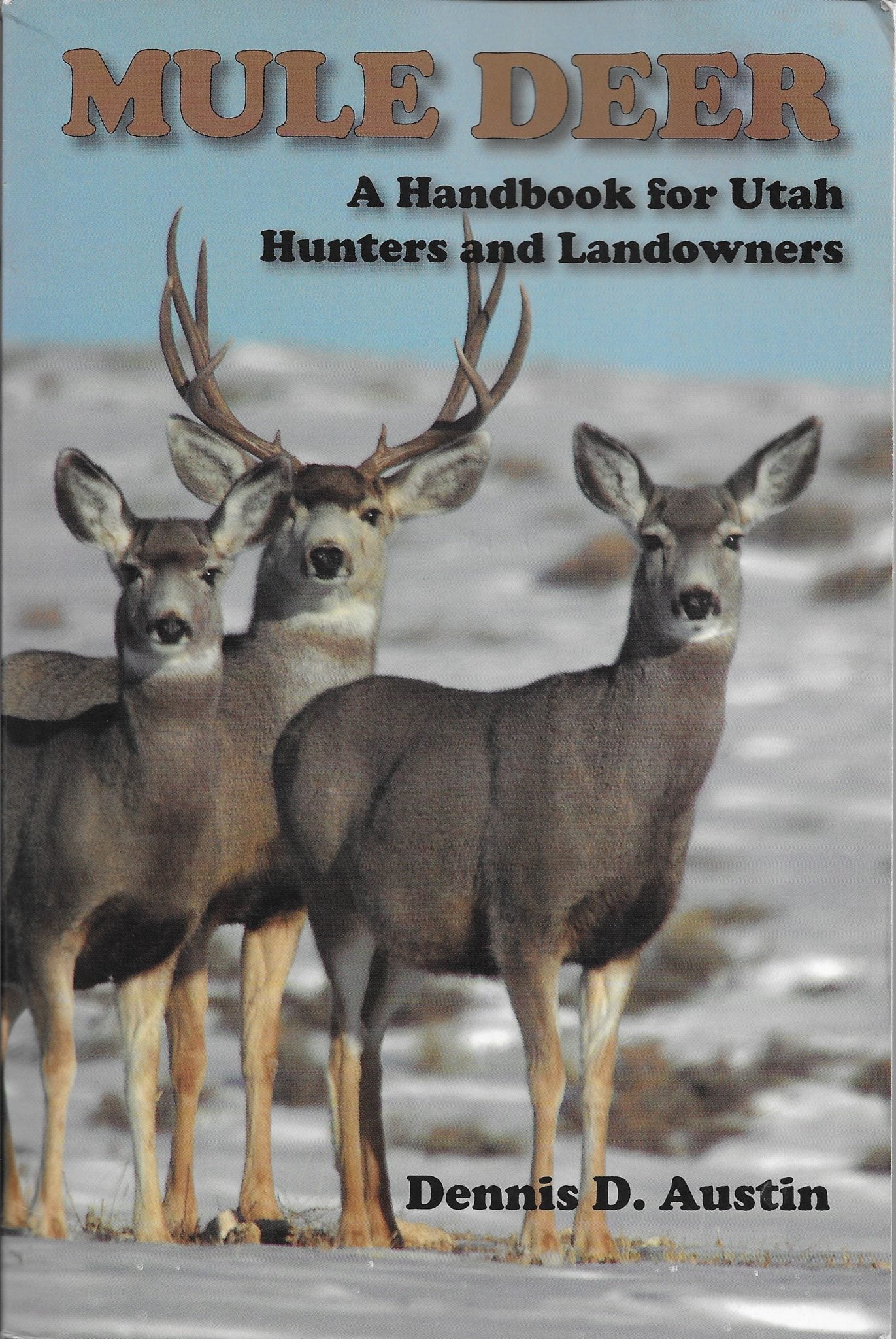 I feel sorry for our western mule deer biologists and managers. They are constantly bombarded by an almost “bro’ science” approach from the public on how mule deer management should be conducted.
I feel sorry for our western mule deer biologists and managers. They are constantly bombarded by an almost “bro’ science” approach from the public on how mule deer management should be conducted.
For example:
“Don’t ever shoot does!”
While that can certainly be true in some areas sometimes (like SE Idaho/Northern Utah right now as they come off of two hard winters out of the last three), to pound your chest and say shooting does is never good is nothing but emotion and, well, “bro’ science.”
Scientists and wildlife managers have done much research over the decades on this subject. We know that in areas where the herd is at or near carrying capacity of the habitat, shooting does can benefit a herd. When deer are over carrying capacity, hunting does can actually save the herd (I can hear the fists pounding the tables right now.) Also, doe hunting can also take pressure off of bucks as many people are just looking to fill a freezer. To think that bucks-only seasons are going to result in more mature bucks is beyond fallacy.
There are many other facets of mule deer management where professionals diverge with the public. Now I’m not here to say current wildlife science is flawless and never wrong. It’s the nature of science to evolve and change as new research is conducted. Sometimes what we thought was the right way to go, turns out not to be. It’s called learning and honest people make adjustments as new information is discovered.
I offer that as passionate hunters of mule deer, we need to educate ourselves as much as possible on wildlife biology and science. It’ll makes us all better stewards of the resource.
Read
How do I know this stuff? Because I read anything I can about mule deer, and you should too. That is why you’ll see that I review many books on this blog.
Motivational speaker Charlie “Tremendous” Jones once said,
“Five years from today, you will be the same person that you are today, except for the books you read and the people you meet.”
I believe him.
So when I was cruising Amazon one day and saw Mule Deer: A Handbook for Utah Hunters & Landowners by Dennis Austin, I sent Jeff Bezos‘ yet another $25 bucks.
Overview
First, don’t think that this book only applies to Utah. The author is a retired research scientist with more than 30 years of experience. Much of what he writes is applicable to any state mule deer inhabit.
I actually bought the book in 2017. It took me this long to get through it. While it’s only 280 pages, it reads a bit like a scientific journal. I’ll admit there were times I had to force myself to keep going. However, as I got deeper into it, I was drawn on by the unemotional presentation of facts on mule deer management. I also thoroughly enjoyed the real-world cases of successful and not-so-successful management approaches Utah has tried over the decades. Austin gives examples from the Cache, East Canyon, and Oak Creek Management units, and more.
Austin covers everything from the history, biology, hunting, and management, while diving deeply into each topic.
Table of Contents
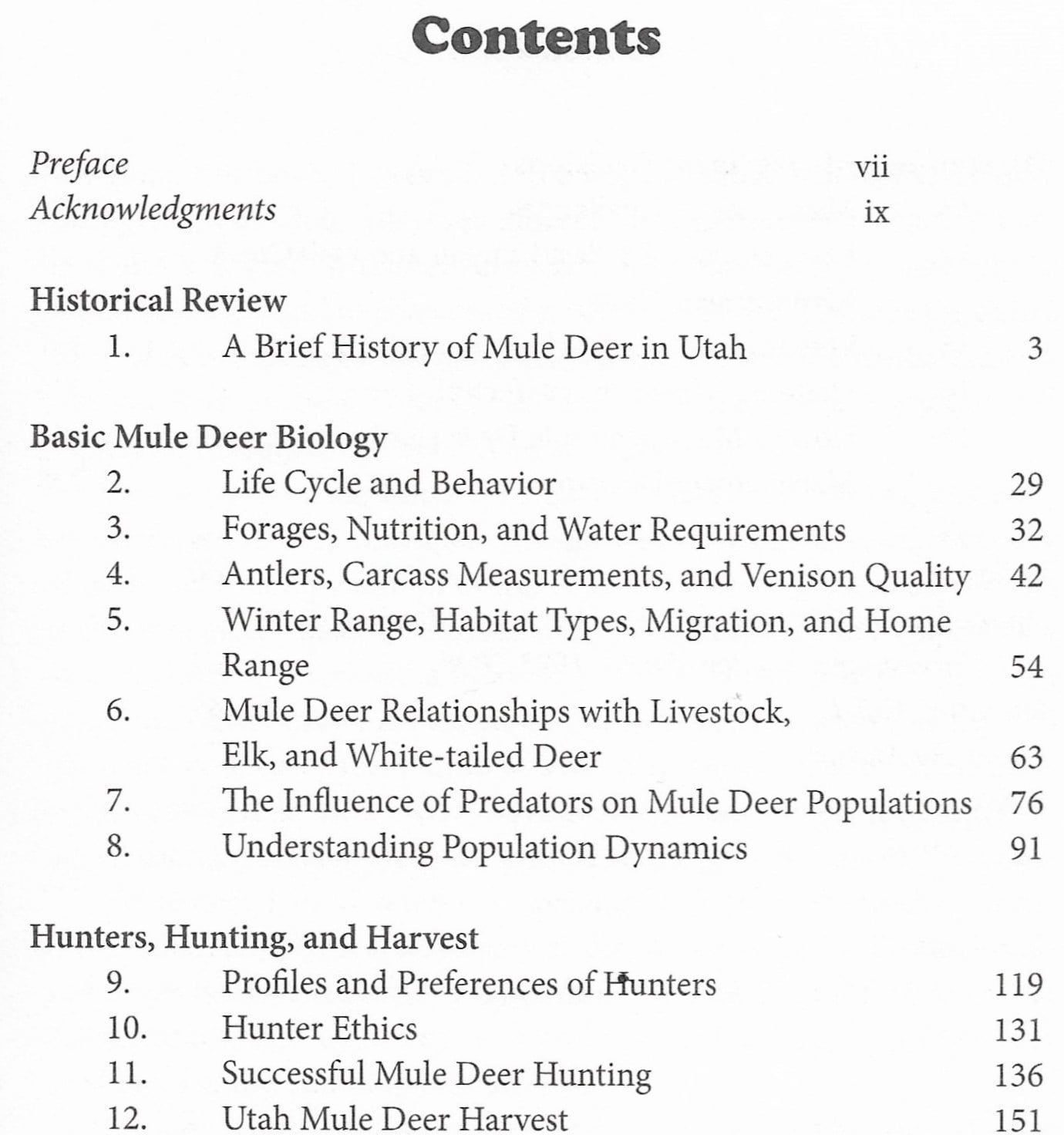
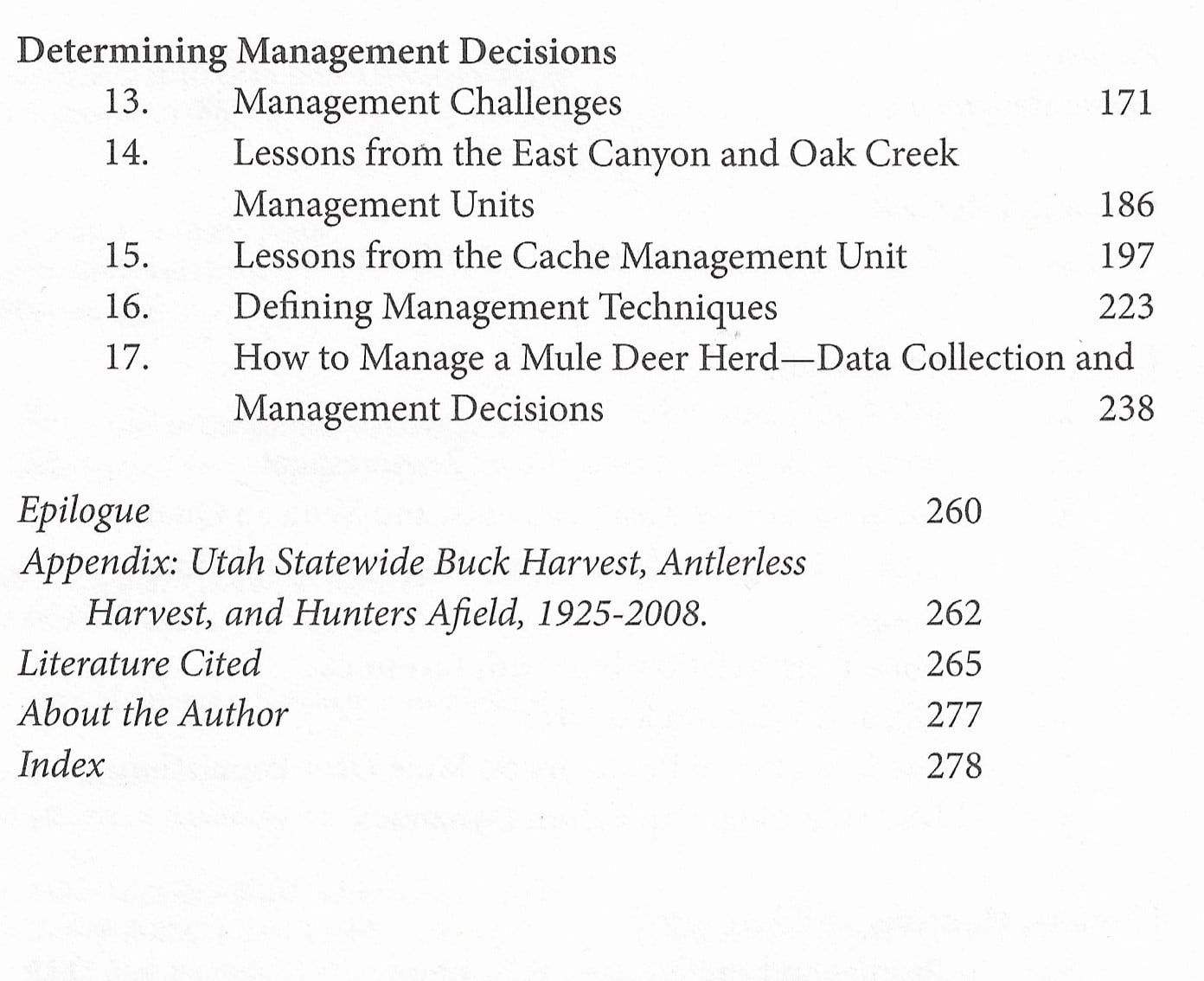
The author explains many of the factors that are misunderstood in the hunting community. Things like when and where doe harvest is permissible, beneficial grazing practices, public opinion’s effect on biologist’s decisions, and much much more. Here’s a very brief snapshot of some of those topics:
History:
The author lays out a detailed account starting in 1876 through 2008. I found it fascinating, sobering, and yet hopeful at the same time. The history of mule deer in Utah is pretty much the history of mule deer in North America. You need to understand it if we want strong mule deer herds for the future.
Grazing:
When done properly, it can greatly benefit mule deer. As mule deer are browsers, when grazers are present in the correct numbers and at the right times, they knock back the plants that are competing with the herbs, forbs, and woody plants that mule deer need. Sadly, many ranges are still overgrazed.
Winterkill:
The author documents various hard-winters’ effects on mule deer, including the devastating 1983-1984 winter. That winter resulted in up to 70% mortality of all age classes in some Utah units. Hunters, environmentalists, conservationists and wildlife biologists realized the folly of allowing mule deer to exceed habitat carrying capacity–a lesson Colorado didn’t learn until the killer 2007-2008 winter.
Predators
Austin discussed predator management throughout the book. He concludes that generally, from the standpoint of a mule deer manager, “…liberal hunting and trapping regulations of predators should be the usual situation…”. However, he does not advocate the elimination of predators from the landscape. He also discusses a new term I keep running across in the literature–Predator Pit. This is a situation where an unmanaged predator population keeps the mortality rate of deer higher than the recruitment rate of fawns to adults. In laymen terms this means very low deer populations with no hope for recovery.
Elk vs. Mule Deer
As elk have the ability to outcompete deer for available forage, have a much wider range of usable forage, and have higher winter survival rates, deer should be prioritized over elk in most situations. This is a hard choice that hunters may have to face if we want strong mule deer herds in traditional mule deer country. Much of this country now has more elk than deer, something that was unthinkable 30 years ago.
Whitetail vs. Mule Deer
I was happy to see the author tackle this issue. He documents that with the first verified whitetail in Cache County in 1996, whitetails have spread easily due to their ability to “…outcompete and replace mule deer through more efficient resource use, adaptability to human activity, and one-way hybridization.” He offers that whitetail may even need to be eliminated from many places if hunters want mule deer to thrive.
This is just a small sample of topics covered by the author. Expect much more if you buy the book.
Summary
While a little dry at times (to be expected when reading science), I walked away with a better understanding of mule deer management and how deer interact with their landscape. I also better understood the vital role that hunter’s dollars play in the continued existence of mule deer in North America.
While the book was published in 2010, before the current statewide plan for Utah was implemented, there is still a lot of pertinent and timeless material presented.
Mule deer hunters everywhere need to educate ourselves, so we can be an intelligent part of the decision making process. I highly recommend this book.
You can buy a copy here
Join the Mule Deer Foundation
If you really want to help mule deer, join the Mule Deer Foundation. As a life member myself, I’ve seen all they do to help conserve mule deer for our future generations. The magazine is top notch if you want more than just hunting stories to learn from. And your money goes towards a species that really needs it.
You can join by clicking on this logo
Read more about all-things-mule-deer-hunting in my book, Hunting Big Mule Deer. Signed copies are available in the Rokslide store, or you can go Amazon for faster delivery.















